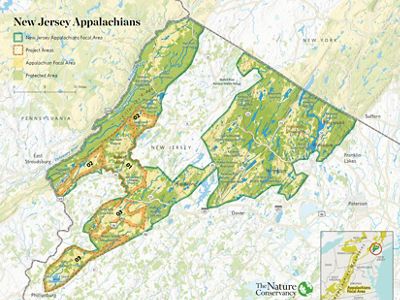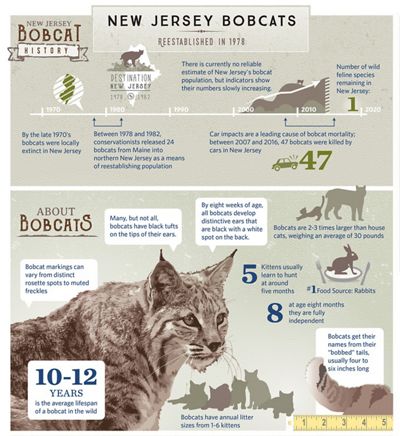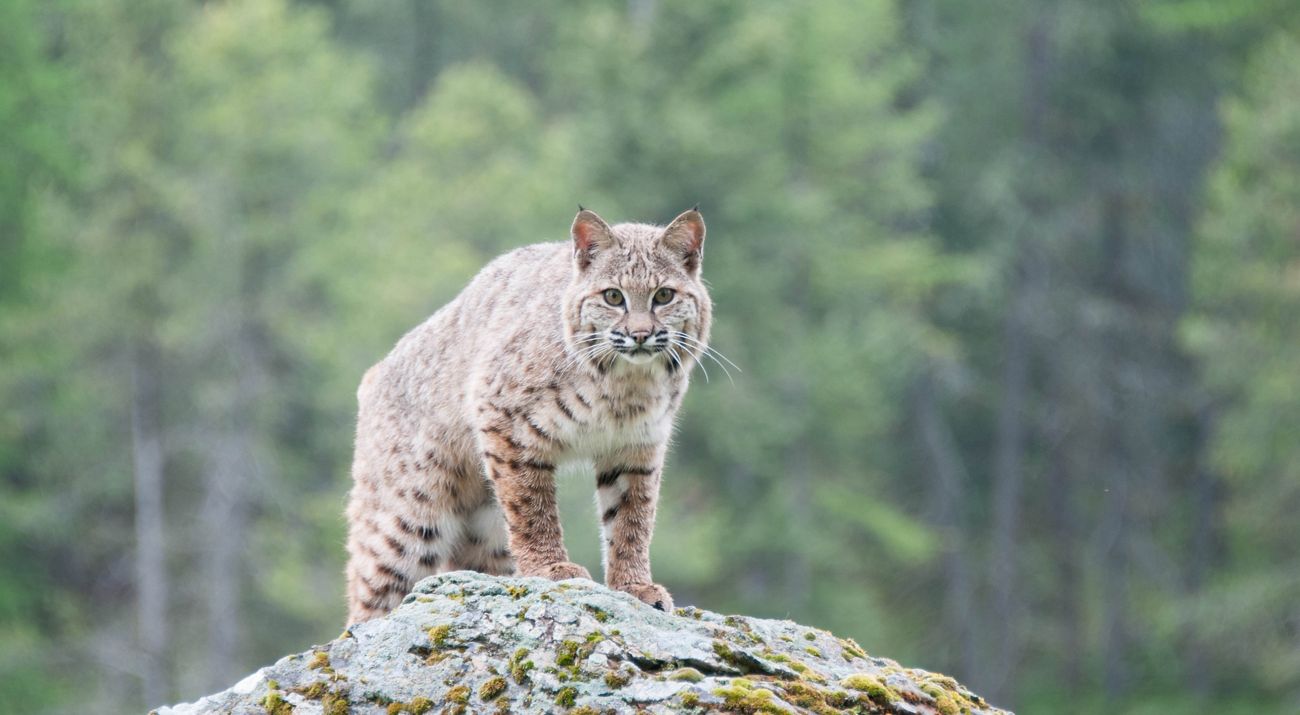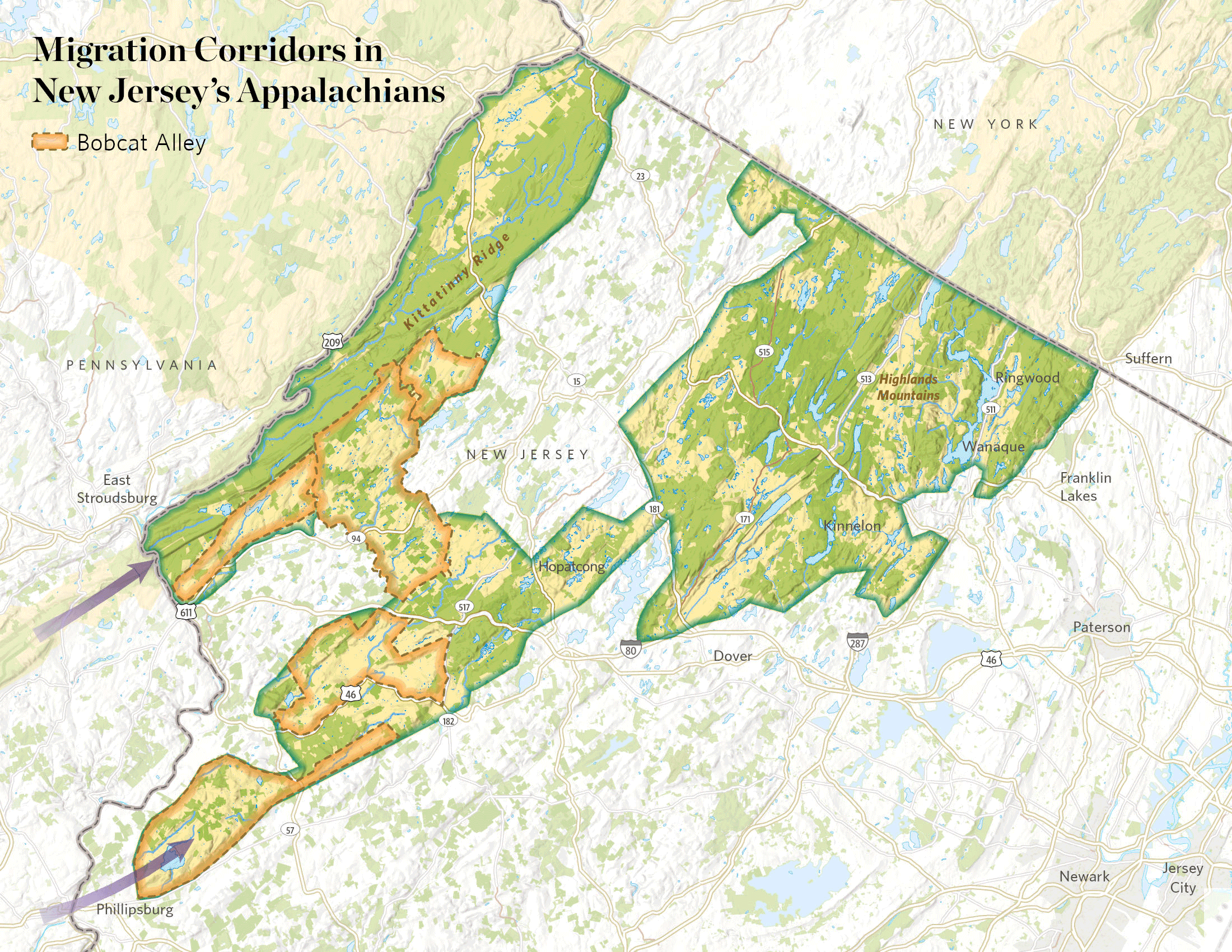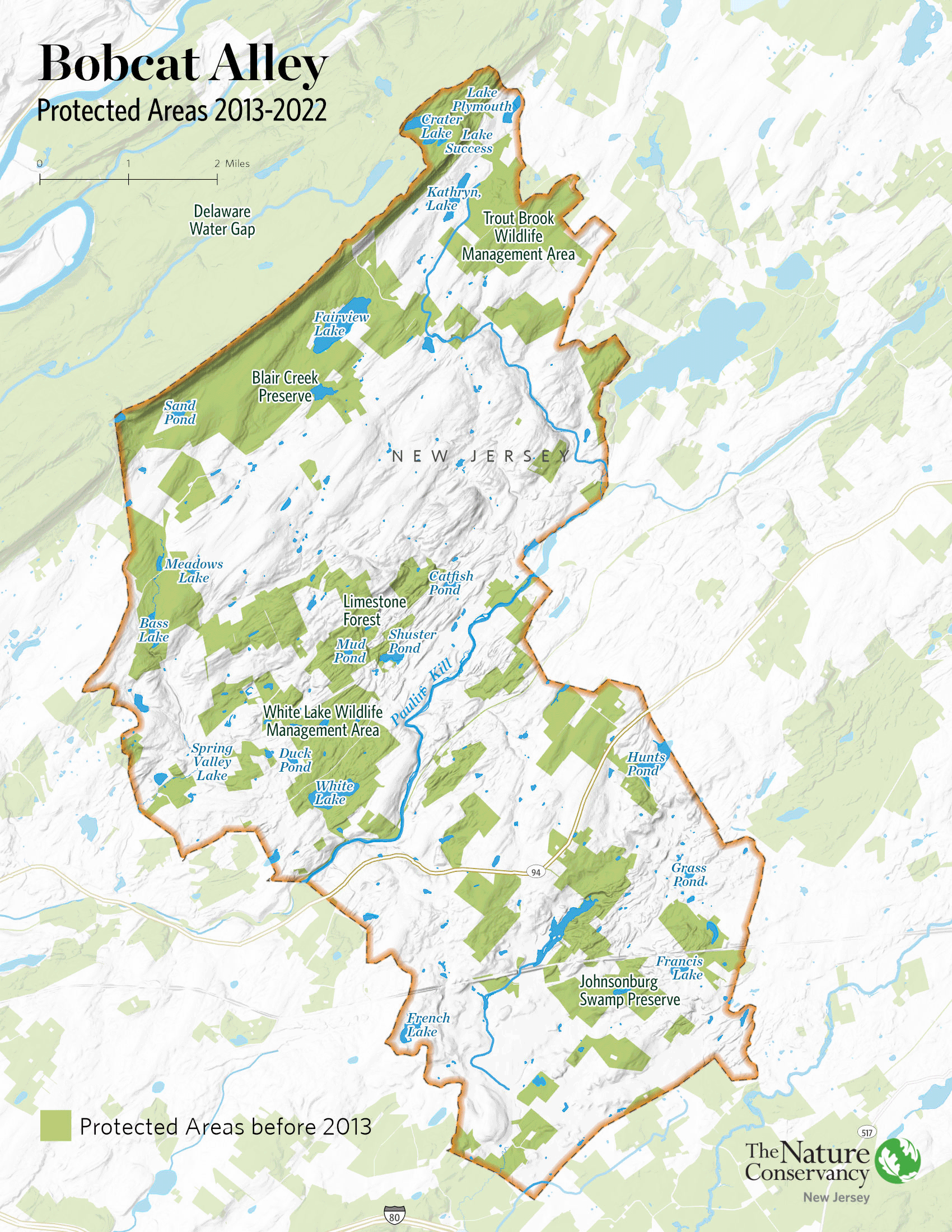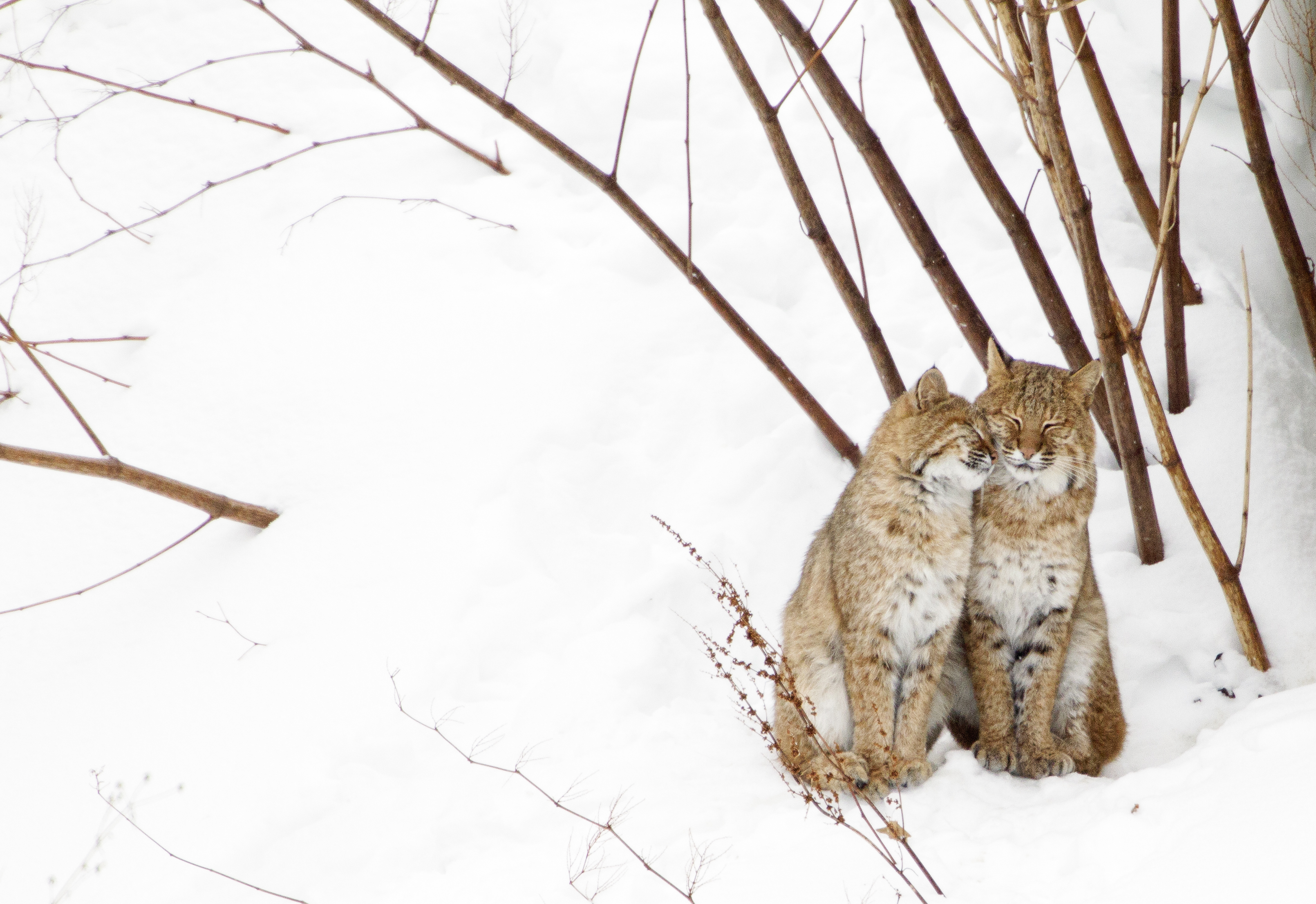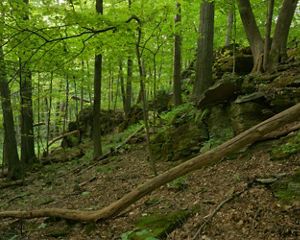Building Bobcat Alley
Once nearly extinct in New Jersey, bobcats are trying to make a comeback. To survive, they need room to roam.
Key Takeaways
- Bobcats are endangered in New Jersey and what they need most right now is room to roam.
- The Nature Conservancy is protecting critical habitat for these native wild felines by connecting preserved land between two great mountain ranges: the Appalachians and the Highlands.
- TNC and our partners aim to protect 10,000 acres in Bobcat Alley by 2030.
Bobcats Without Borders
In 2014, The Nature Conservancy launched an ambitious initiative to build Bobcat Alley, a protected wildlife corridor that provides state-endangered bobcats and other wildlife space to move between the Kittatinny and Highlands ridges within New Jersey’s Appalachian Mountains.
The project is critical for safeguarding a habitat stronghold within our own small and heavily populated state, which is under constant pressure of landscape fragmentation from roads and development. And further, it is of outsized importance on a continental level, as a migratory pinch point along the Appalachians that connects forested migratory routes between Central and Northern sections of the range.
We know that many species live and migrate through the Bobcat Alley region. Studies also show that plants and animals are moving 11 miles northward and 36 feet upslope every decade in response to changing environmental conditions, and that the Appalachians are a resilient refuge where this occurs.
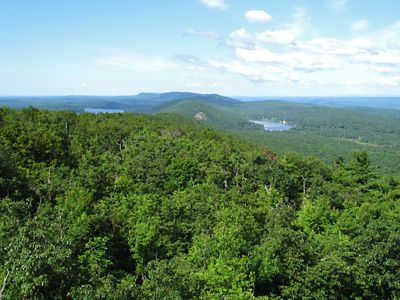
The Appalachians: Nature's Superhighway
More than 400 million years ago, natural forces conspired to make the Appalachians one of the most resilient, diverse and productive places on Earth. This ancient chain of forested mountains, valleys, wetlands and rivers spans roughly 2,000 miles from Alabama to Canada. Bobcat Alley is a small but mighty component of this landscape.
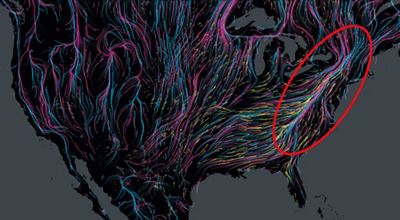
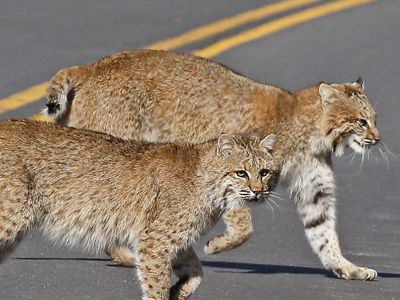
Branching Out in Bobcat Alley
When TNC first developed a plan for Bobcat Alley, we set a long-term vision to ensure that 60% (19,200 acres) of a 32,000-acre corridor in Warren and Sussex counties is preserved. About 13,000 of the 19,200 acres are already protected, leaving 6,200 acres in play as our goal. To date, with partners, we have protected 1,560 acres in the designated region, representing 25% of our acreage goal and bringing the total amount of preserved land in the 32,000-acre expanse to 39%. That progress has been powered by generous TNC supporters like you!
Now, recognizing the magnitude of Bobcat Alley’s significance to biodiversity in eastern North America, TNC is reimagining the project’s scope, tripling its planned size to more than 96,000 acres. The expanded land footprint includes intact forests of the Kittatinny Ridge and the Highlands, which respectively connect to protected areas in Pennsylvania and the Hudson River Valley on to the Berkshires. “We’re redefining Bobcat Alley,” said Olsen. “Our updated goal is to work with partners to protect 10,000 pristine acres by 2030 within this larger region.”
Stay connected for the latest news from nature.
Get global conservation stories, news and local opportunities near you. Check out a sample Nature News email.
Updated Land Priorities
Now, recognizing the magnitude of Bobcat Alley’s significance to biodiversity in eastern North America, we are reimagining the project’s scope, tripling its planned size to more than 96,000 acres.
-
Bobcat Bridge
Bobcat Alley’s original 32,000-acre habitat bridge between the mountain ridges contains limestone forests, cold-water streams and rock outcrops that provide hallmark conditions for charismatic fauna like state-endangered bobcats and bog turtles. Animals moving along the Appalachian Mountain range need the connectivity at Bobcat Bridge to access protected land in other states and mix with other populations within their species to ensure genetic diversity.
-
The Kittatinny Ridge
Large, mature and undisturbed forests along this mountainous span in northwestern New Jersey are prime habitat for roaming species like black bears and red foxes, and for neotropical birds like cerulean warblers. The woodlands’ unique geological features support hemlock, oak, pine and rare plants like the Hammond’s yellow spring beauty, which grows nowhere else in the world.
-
The Southern Highlands
The Southern New Jersey Highlands have already been touched by development and remain vulnerable to fragmentation from housing and construction. The Southern Highlands contain important intact stands of oak, beech, maple and hickory where gray foxes, barred owl and river otter thrive. The forests protect drinking water for most residents of northern New Jersey, and the Pequest and Musconetcong Rivers, which are stronghold habitats for brook trout, New Jersey’s state fish and only native trout.
